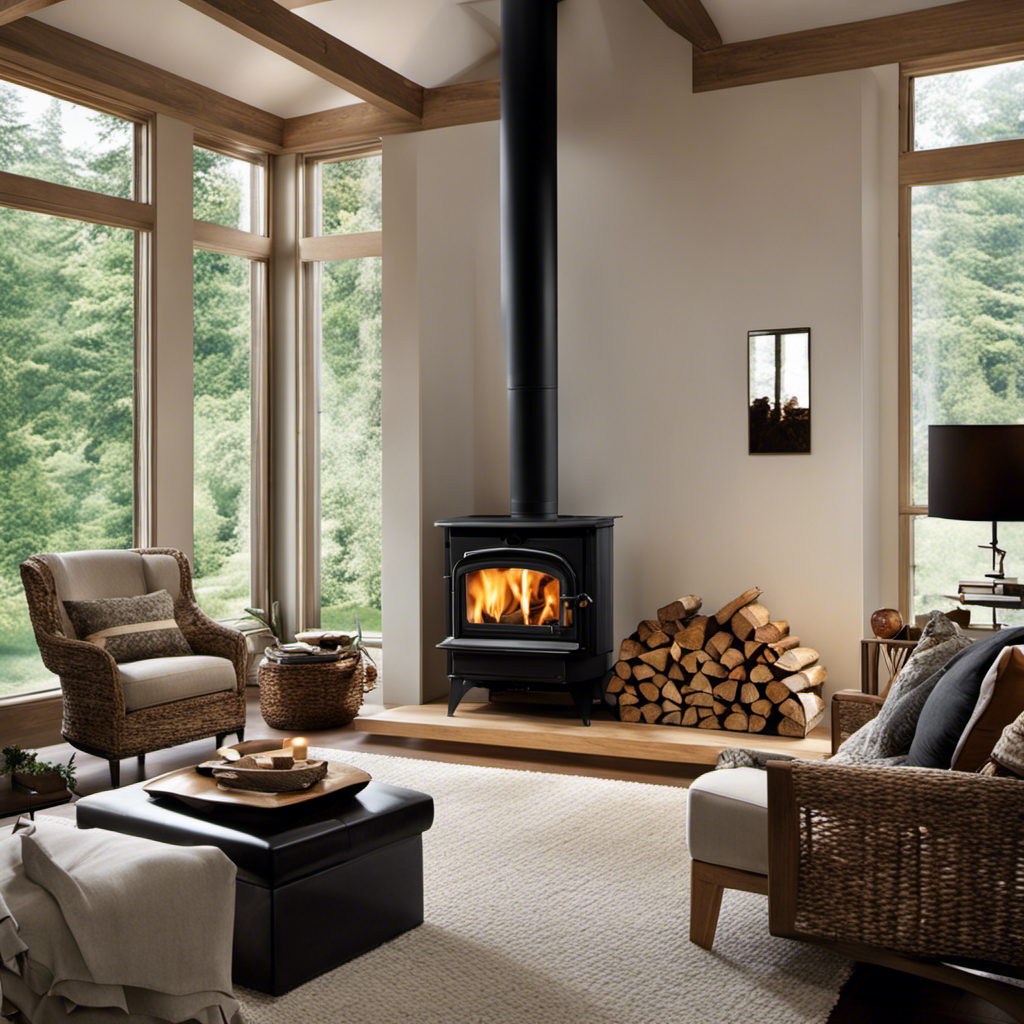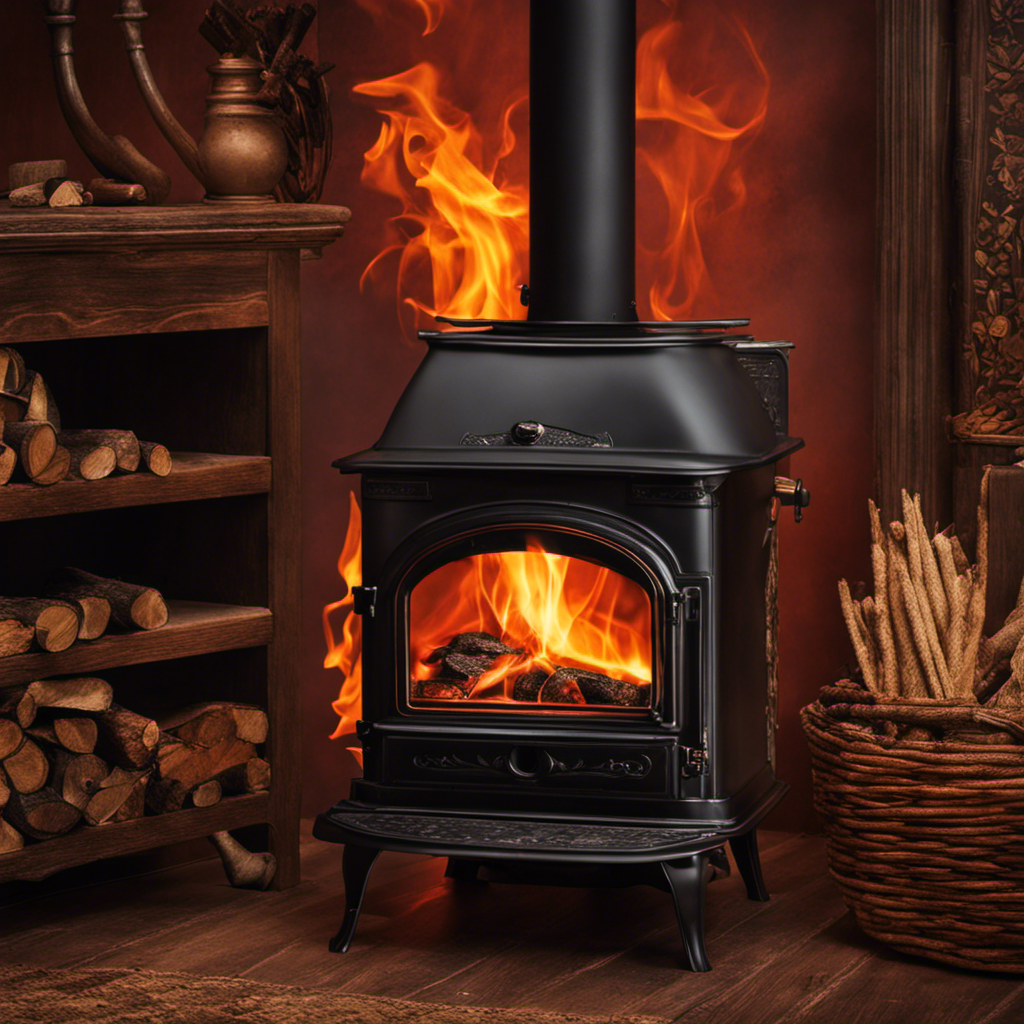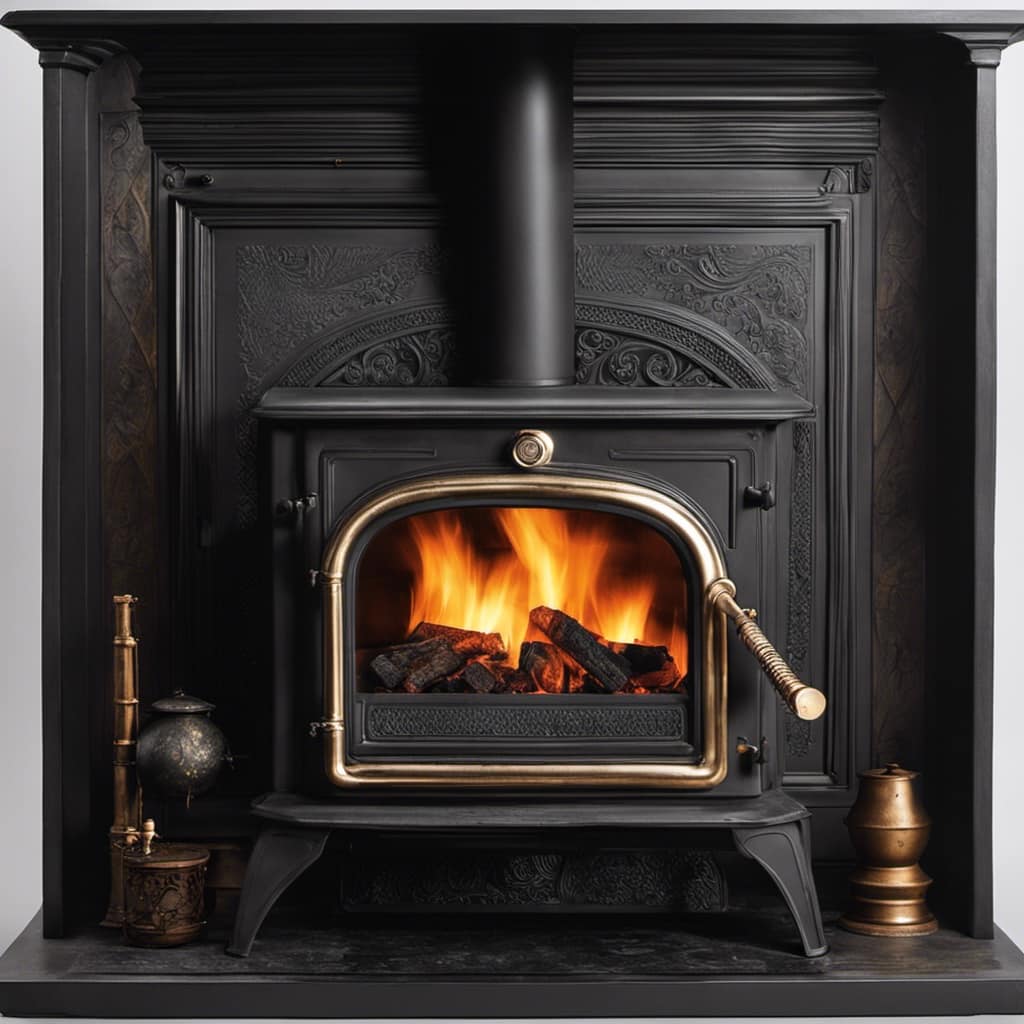Setting up a wood stove may seem like a costly investment, but rest assured, it’s more affordable than you may realize.
In this article, I’ll break down the factors that affect wood stove costs, the price range you can expect, installation expenses, and even the additional costs for maintenance.
Plus, I’ll share some cost-effective tips for buying and installing a wood stove.
So, let’s dive in and explore the true cost of adding a wood stove.
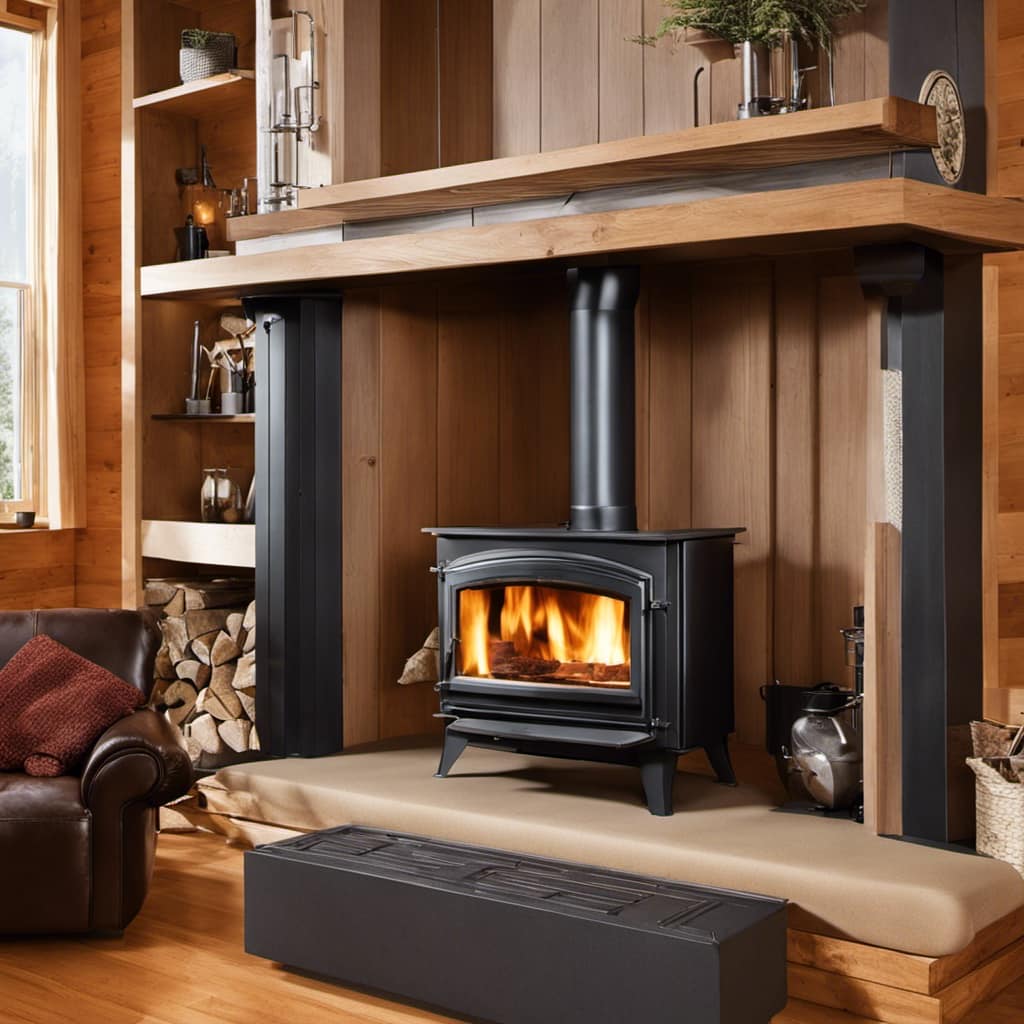
Key Takeaways
- The cost of a wood stove can vary depending on factors such as materials, size, brand, and additional features.
- Proper installation is important for efficiency and to prevent heat loss.
- Regular maintenance, including cleaning and chimney inspection, is necessary for efficient and safe operation.
- Consider factors such as energy efficiency, fuel consumption reduction, and available rebates or incentives when buying a wood stove.
Factors Affecting Wood Stove Costs
I can’t believe how much factors like materials and installation can affect the cost of a wood stove. When it comes to wood stove efficiency, there are several key factors to consider.
The type of materials used in the construction of the stove can greatly impact its efficiency. For example, stoves made from cast iron tend to retain heat better than those made from steel.
Additionally, the installation of the stove plays a crucial role in its efficiency. Proper installation ensures that the stove is properly vented and that there are no air leaks. This prevents heat loss and maximizes the stove’s efficiency.
It’s important to avoid common mistakes when buying a wood stove, such as purchasing a stove that’s too large or too small for your space, or failing to consider the insulation and ventilation needs of your home.
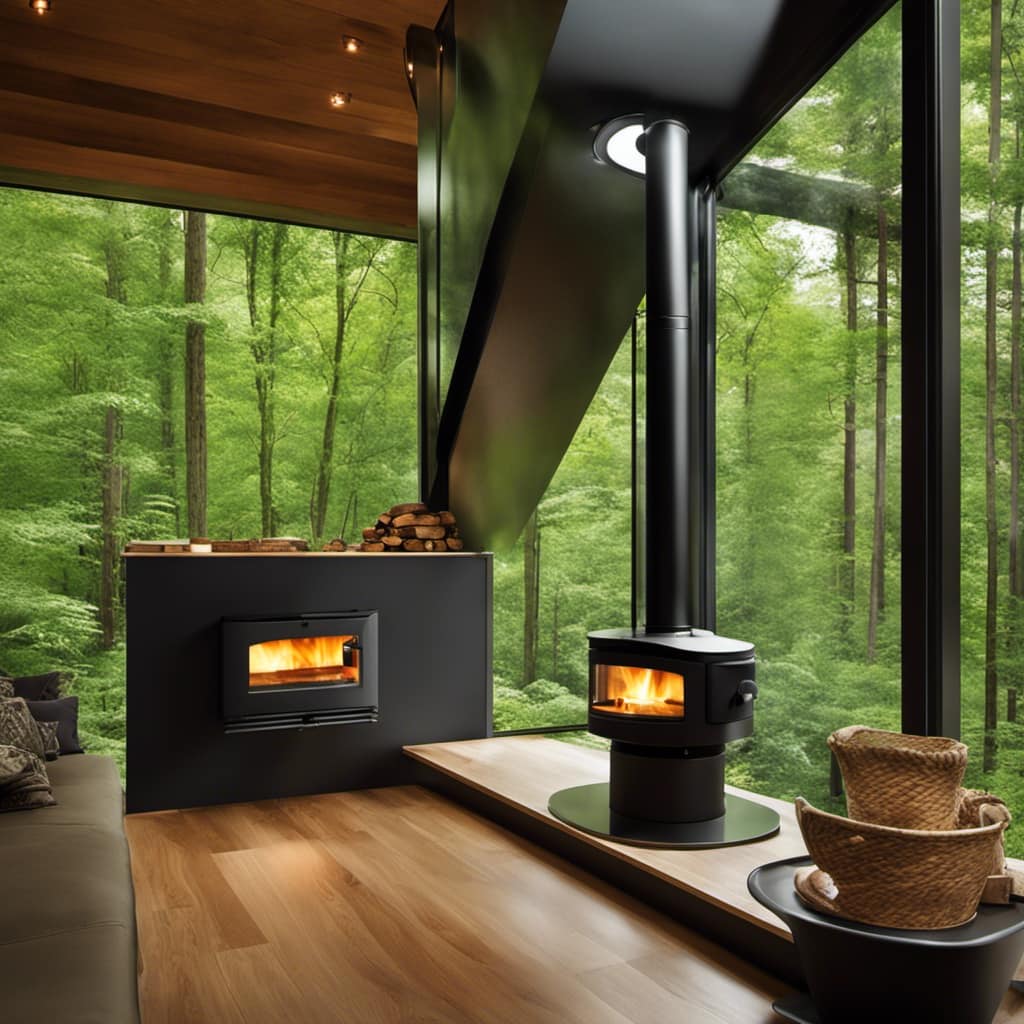
Taking these factors into account can help you choose an efficient wood stove that meets your heating needs. Now, let’s move on to the next section where we discuss the price range of wood stoves.
The Price Range of Wood Stoves
Typically, wood stoves can range in price from affordable to expensive, but it ultimately depends on the specific features and brand. The average market prices for wood stoves can vary greatly, with some entry-level models starting at around $500 and high-end models exceeding $5,000.
The cost of a wood stove is influenced by factors such as size, materials used, efficiency ratings, and additional features like blowers or decorative accents. When comparing the cost of wood stoves with other heating options, it’s important to consider long-term savings.
While the upfront cost of a wood stove may be higher than some alternatives, such as electric or gas heaters, wood stoves offer the benefit of utilizing a renewable resource and can significantly reduce heating bills over time. Additionally, the ambiance and warmth provided by a wood stove can’t be replicated by other heating options, making it a worthwhile investment for many homeowners.
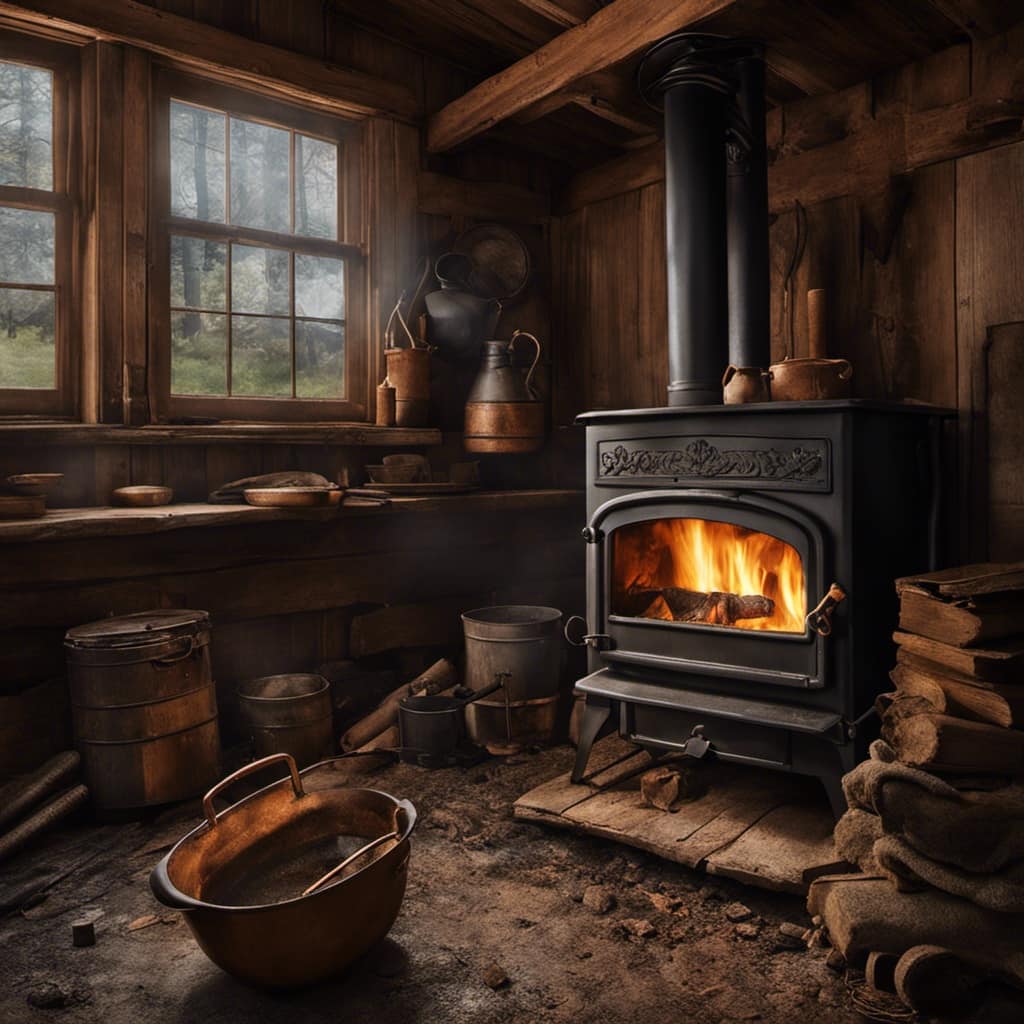
Installation Expenses for Adding a Wood Stove
Adding a wood stove to my home requires careful consideration of the installation expenses.
Not only do I need to assess the cost of the stove itself, but I also need to factor in the expenses associated with the installation process.
One key aspect to consider is the installation timeline. Depending on the complexity of the installation, it may take anywhere from a few hours to a couple of days.
It’s important to plan accordingly and allocate the necessary time for the installation.

Additionally, safety precautions must be taken into account. This includes ensuring proper ventilation, complying with building codes, and installing heat shielding materials.
It’s crucial to prioritize safety to prevent any potential hazards.
Overall, understanding the installation expenses, timeline, and safety precautions is essential when adding a wood stove to my home.
Additional Costs for Wood Stove Maintenance
To maintain a wood stove, regular cleaning and purchasing replacement parts are necessary, but these additional costs are worth it for the warmth and coziness it provides. Wood stove cleaning is an essential task that ensures the efficient and safe operation of your stove. Regular cleaning helps remove creosote buildup, which can lead to chimney fires. It also improves the overall performance of the stove and extends its lifespan. Additionally, chimney inspection is crucial to identify any potential issues or blockages that could affect the stove’s performance. This can be done by a professional chimney sweep who will assess the condition of the chimney and recommend any necessary repairs or maintenance. Investing in regular cleaning and chimney inspection will not only ensure the safety of your wood stove but also enhance its efficiency and longevity.
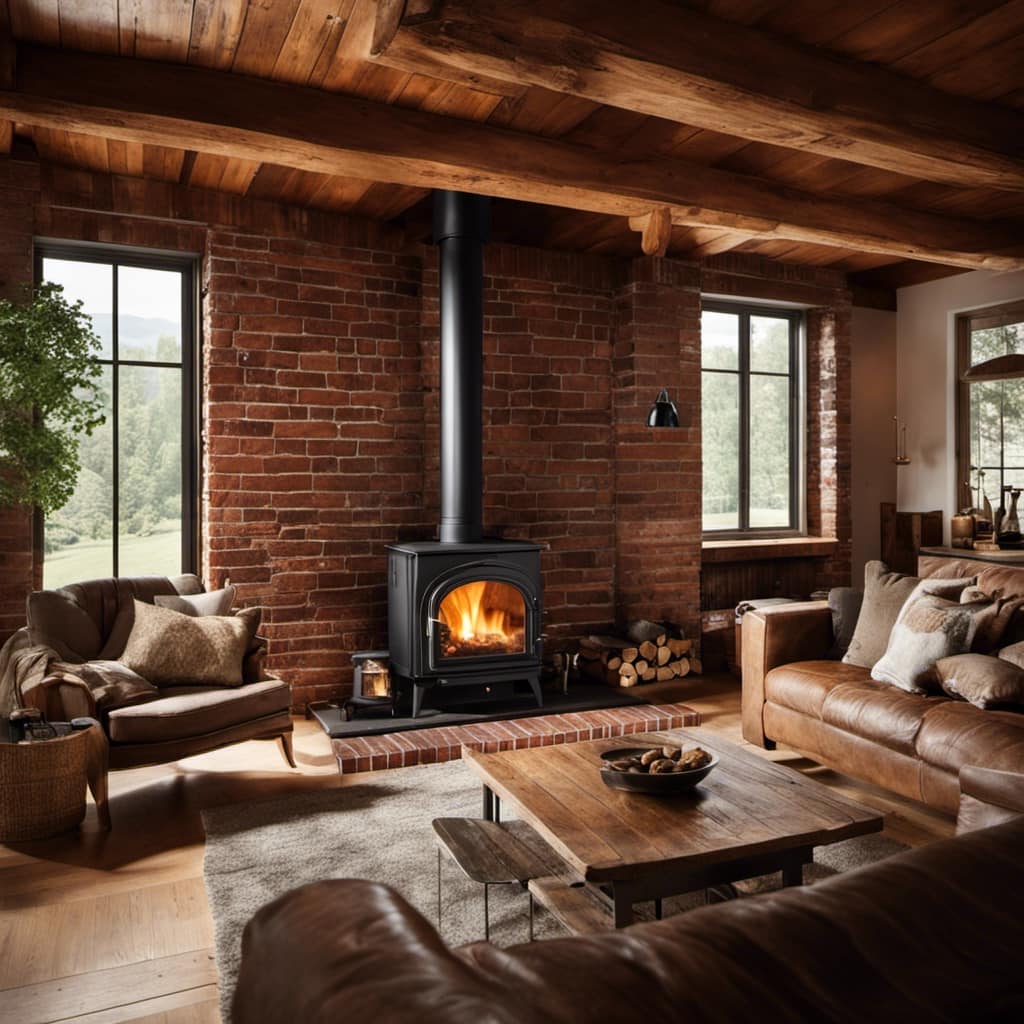
| Benefits of Wood Stove Cleaning | Benefits of Chimney Inspection |
|---|---|
| Removes creosote buildup | Identifies potential issues |
| Enhances stove performance | Ensures efficient stove operation |
| Extends stove lifespan | Ensures safety |
| Prevents chimney fires | Recommends necessary repairs |
Does the Cost of an Add-A-Wood Stove Include Proper Heat Regulation?
When considering the cost of an add-a-wood stove, it’s important to confirm if proper heat regulation is included. Understanding the wood stove temperature limits and how they are maintained is crucial for ensuring both safety and efficiency. Always inquire about this before making a purchase.
Cost-effective Tips for Buying and Installing a Wood Stove
I definitely saved money by researching different wood stove options and finding a cost-effective one that suited both my budget and heating needs.
When it comes to buying a wood stove, it’s important to have a buying guide to help you make the right choice. One of the key factors to consider is energy efficiency. Look for stoves that are EPA-certified, as they’re designed to burn wood more efficiently, reducing your fuel consumption and saving you money in the long run.
Another important aspect to consider is the size of the stove. Make sure it’s appropriate for the size of the space you want to heat.
Finally, don’t forget to check for any available rebates or incentives that can further reduce the cost of your wood stove purchase.
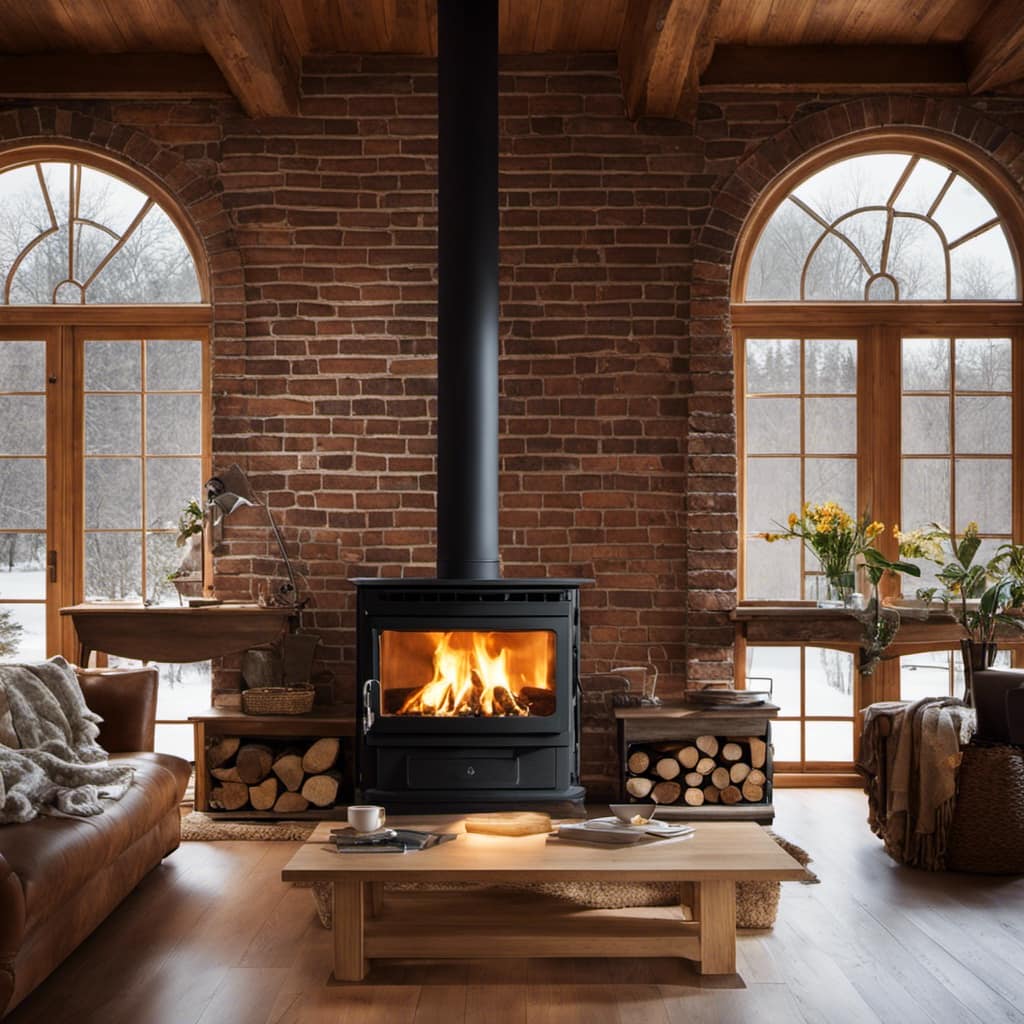
Conclusion
In conclusion, adding a wood stove to your home can be a cost-effective and efficient way to heat your space. The overall cost will depend on various factors such as the type and quality of the stove, installation expenses, and ongoing maintenance.
By considering these factors and following cost-effective tips, you can make a wise investment that won’t only keep you warm but also add a touch of rustic charm to your living space.
Growing up surrounded by the vast beauty of nature, Sierra was always drawn to the call of the wild. While others sought the comfort of the familiar, she ventured out, embracing the unpredictable and finding stories in the heartbeat of nature.
At the epicenter of every remarkable venture lies a dynamic team—a fusion of diverse talents, visions, and passions. The essence of Best Small Wood Stoves is crafted and refined by such a trio: Sierra, Logan, and Terra. Their collective expertise has transformed the platform into a leading authority on small wood stoves, radiating warmth and knowledge in equal measure.




